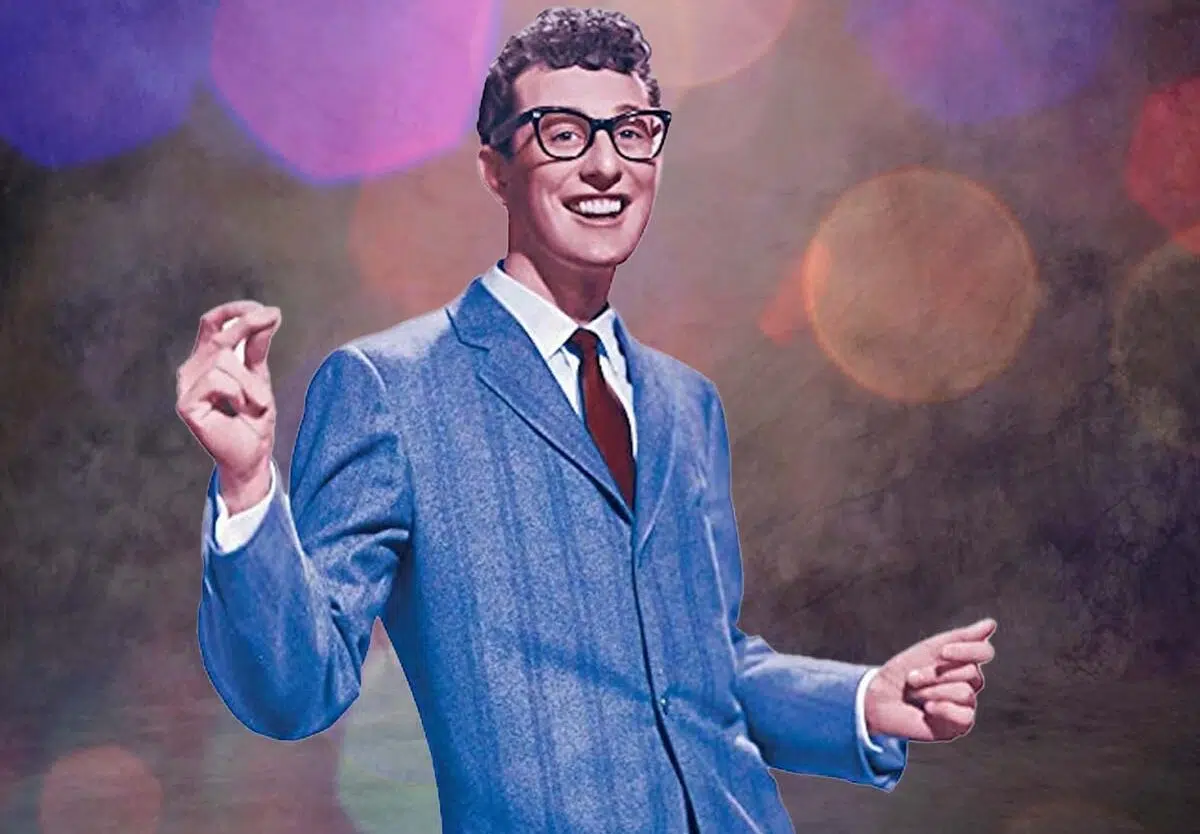
Buddy Holly, the legendary rock ‘n’ roll icon, left an indelible mark on the music world in his short but impactful career. With his distinctive voice, catchy tunes, and innovative approach to songwriting, Holly revolutionized the genre and paved the way for future artists.
In this article, we will delve into the fascinating life and career of Buddy Holly, uncovering 19 unbelievable facts that shed light on the man behind the music. From his humble beginnings in Lubbock, Texas, to his rise to stardom and tragic demise, Holly’s story is one of triumph and tragedy.
Get ready to be amazed as we explore the lesser-known aspects of Buddy Holly’s life, including his musical influences, his groundbreaking recording techniques, and his enduring legacy in the world of rock ‘n’ roll. So, buckle up and prepare for a journey through the remarkable life of one of music’s greatest pioneers.
Key Takeaways:
- Buddy Holly, the rock and roll legend, was a trailblazer in music, influencing artists like The Beatles and Bob Dylan. His unique style and catchy melodies continue to inspire musicians today.
- Despite his tragic death at a young age, Buddy Holly’s music legacy lives on, breaking racial barriers and shaping the rock and roll era. His impact extends to fashion, films, and tribute concerts, showcasing his timeless appeal.
Buddy Holly’s real name was Charles Hardin Holley.
Buddy Holly, the iconic rock and roll musician, was actually born as Charles Hardin Holley on September 7, 1936, in Lubbock, Texas.
Buddy Holly popularized the use of the two guitar, bass, and drums lineup in rock and roll music.
As part of his band, The Crickets, Buddy Holly introduced the now-standard two guitars, bass, and drums configuration to the world of rock and roll, influencing countless musicians that followed.
Buddy Holly was one of the first artists to write, produce, and record his own music.
Unlike many artists of his time, Buddy Holly was involved in all aspects of his music production. He wrote and co-wrote his own songs, played multiple instruments, and even produced his recordings.
Buddy Holly’s song “Peggy Sue” was originally titled “Cindy Lou”.
Before its release, Buddy Holly’s classic hit “Peggy Sue” was actually named after his niece, Cindy Lou. However, the song was later changed to “Peggy Sue” at the suggestion of his producer.
Buddy Holly recorded over 50 songs in his short career.
In his brief but impactful career, Buddy Holly managed to record more than 50 songs across various genres, leaving behind a rich legacy of music that continues to resonate with fans today.
Buddy Holly was one of the first artists to use overdubbing techniques in the recording studio.
With his innovative spirit and desire for experimentation, Buddy Holly was among the pioneers of using overdubbing techniques to layer different musical parts in his recordings, resulting in a fuller sound.
Buddy Holly influenced numerous musicians, including The Beatles and Bob Dylan.
The impact of Buddy Holly’s music reverberated far beyond his own time. His unique style and catchy melodies influenced some of the most iconic musicians of the 20th century, such as The Beatles and Bob Dylan.
Buddy Holly’s glasses became his distinctive trademark.
Buddy Holly’s eyeglasses were not just a functional accessory but also became his signature look. They have become synonymous with his image and have since been recognized as an iconic symbol of the rock and roll era.
Buddy Holly had a fear of flying and preferred to travel by bus.
Despite this fear, Buddy Holly embarked on a fateful tour in 1959 that would tragically end in a plane crash, claiming the lives of him and his fellow musicians, Ritchie Valens and J.P. The Big Bopper” Richardson.
Buddy Holly’s music crossed racial barriers during a segregated era.
Buddy Holly’s music appealed to audiences of all backgrounds, breaking down racial barriers and contributing to the integration of music during a time of racial segregation in the United States.
Buddy Holly was posthumously inducted into the Rock and Roll Hall of Fame in 1986.
In recognition of his significant influence on the genre, Buddy Holly was rightfully honored with induction into the Rock and Roll Hall of Fame more than two decades after his untimely death.
Buddy Holly’s last live performance was in Clear Lake, Iowa.
Little did Buddy Holly know that his performance at the Surf Ballroom in Clear Lake, Iowa, on February 2, 1959, would be his final show before the tragic plane crash that took his life.
Buddy Holly’s songwriting style blended country, rockabilly, and rhythm and blues.
Buddy Holly’s musical style was a unique fusion of different genres, incorporating elements of country, rockabilly, and rhythm and blues, resulting in a sound that left a lasting impact on the music industry.
Buddy Holly’s music catalog continues to be celebrated and cherished by fans worldwide.
Decades after his passing, Buddy Holly’s songs such as “That’ll Be the Day,” “Everyday,” and “Oh Boy!” still captivate audiences and are frequently played on radio stations around the world.
Buddy Holly’s impact on popular culture extends to films, musicals, and tribute concerts.
The enduring legacy of Buddy Holly has been honored in various forms, including biographical films, stage musicals, and tribute concerts, which showcase the timeless appeal of his music.
Buddy Holly’s influence extended beyond music into fashion and style.
Beyond his contributions to music, Buddy Holly also made an impact on fashion. His distinct eyeglasses, hairstyle, and modest attire became hallmarks of the 1950s rock and roll aesthetic.
Buddy Holly’s music was a major influence on the British Invasion bands of the 1960s.
The British Invasion bands, such as The Beatles and The Rolling Stones, drew inspiration from Buddy Holly’s catchy melodies and songwriting techniques, shaping the course of rock music for years to come.
Buddy Holly’s tragic death at the age of 22 left an indelible mark on the music industry.
The untimely passing of Buddy Holly and his fellow musicians in the plane crash on February 3, 1959, often referred to as “The Day the Music Died,” shocked the world and forever changed the trajectory of rock and roll.
Buddy Holly’s music continues to inspire future generations of musicians.
The enduring influence of Buddy Holly can be seen in the countless musicians who have been inspired by his innovative spirit, songwriting prowess, and timeless tunes.
Conclusion
Buddy Holly was a true legend in the world of rock and roll. His impact on the music industry is undeniable, and his untimely death at the young age of 22 only added to his mystique. From his distinctive sound to his pioneering approach to recording, Buddy Holly left an indelible mark on the genre.
With his energetic performances, catchy melodies, and relatable lyrics, Buddy Holly captivated audiences around the world. His influence can still be felt today, as countless musicians continue to be inspired by his music and style.
Though his career was tragically cut short, Buddy Holly’s legacy lives on. His songs remain timeless classics, and his innovative techniques continue to shape the music industry. Buddy Holly will forever be remembered as one of the greatest musicians of all time.
FAQs
Q: What was Buddy Holly’s real name?
A: Buddy Holly’s real name was Charles Hardin Holley.
Q: When did Buddy Holly die?
A: Buddy Holly died on February 3, 1959 in a tragic plane crash.
Q: What are some of Buddy Holly’s most famous songs?
A: Some of Buddy Holly’s most famous songs include “Peggy Sue,” “That’ll Be the Day,” and “Everyday.
Q: How old was Buddy Holly when he became famous?
A: Buddy Holly gained fame at the age of 19 with his band, the Crickets.
Q: Did Buddy Holly have any siblings?
A: Yes, Buddy Holly had two older siblings named Larry and Patricia.
Q: What impact did Buddy Holly have on the music industry?
A: Buddy Holly’s innovative sound and recording techniques influenced generations of musicians and helped shape the rock and roll genre.
Q: Was Buddy Holly posthumously inducted into the Rock and Roll Hall of Fame?
A: Yes, Buddy Holly was posthumously inducted into the Rock and Roll Hall of Fame in 1986.
Q: How many albums did Buddy Holly release during his career?
A: Buddy Holly released three studio albums during his career.
Buddy Holly's incredible legacy lives on, captivating music enthusiasts worldwide. Delve deeper into his remarkable story by exploring the behind-the-scenes tales from the biopic "The Buddy Holly Story". Uncover more fascinating facts about Holly's collaboration with The Crickets, his iconic band. Lastly, gain insights into the life of Maria Elena Holly, Buddy's beloved wife, through a collection of astonishing facts.
Was this page helpful?
Our commitment to delivering trustworthy and engaging content is at the heart of what we do. Each fact on our site is contributed by real users like you, bringing a wealth of diverse insights and information. To ensure the highest standards of accuracy and reliability, our dedicated editors meticulously review each submission. This process guarantees that the facts we share are not only fascinating but also credible. Trust in our commitment to quality and authenticity as you explore and learn with us.


